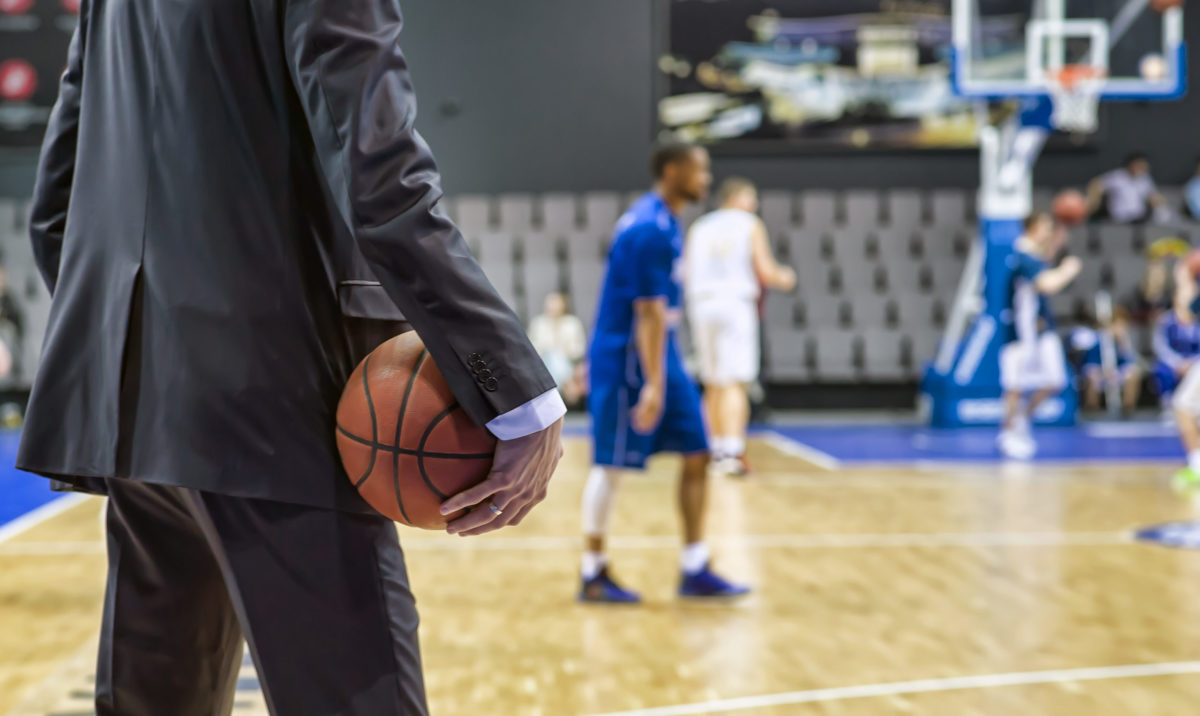Practice How You Play
At Harvard Basketball, we want to practice how we want to play. Since we want to play an up- tempo, high-energy style, we emphasize pace, communication, and quick transitions in everything we do – whether in converting from defense to offense, or in moving from one drill to the next. Everything about our practices is purposeful. Our practices are designed not only to work on scheme and skill, but also to instill the values and principles that are important to us and our program. We want to accomplish this goal while keeping the focus on being efficient, organized, and productive with our time. In this short essay, I want to share a bit about how our practice planning and teaching philosophy has helped build our style of play and culture. I hope that the ideas may help you and your program.
From a holistic perspective, we structure our daily practices using the “whole-part-whole” method. Philosophically, I want for our players to see how all of the pieces in our system fit together, before then breaking down into small groups to work on the component parts. For this reason, we traditionally start with a team fast-break drill and then segue to 5-on-0, up-and- back, on two courts. In our fast break drills, we are building our early offense while also creating energy and communication in the gym. In 5-on-0, we prioritize execution of sets, as well as “attention to detail” in our fundamentals – passing, cutting, screening, etc.
After the “whole” segment of our practices, the “part” portion involves daily defensive stations, post/perimeter shooting, and 4 on 4 Shell. It is during this “part” portion that we build up the habits and skills that are required to excel in our system. In building these habits, much of what we do is about repetition. This generally means short bursts of teaching in order to prioritize high quality reps. I am fortunate to have an outstanding staff of assistants that leads this portion of our practice. I entrust my assistants in these areas in order to create shared ownership and also to expose the players to different voices and teaching techniques.
Following our breakdown work, we build back up to 5-on-5 and go live. Our scrimmage segments are typically full-court and involve one or two specific points of emphasis (i.e., 5 on 5 with an emphasis on “shot selection” and “valuing the ball”). We also try to make this segment of our practice competitive by keeping score and penalizing the losing team. It is our hope that our players, who have now worked on concepts in small groups, can integrate those pieces into 5 on 5 seamlessly.
In addition to the actual flow of practice, there are a few key themes and points of emphasis that guide our teaching. First, as mentioned, we want to be efficient in everything that we are doing. We organize water breaks by class, for example, so that three classes are shooting free throws and rehearsing free-throw block-outs while one class is getting a quick drink. In this same vein, I am a firm believer in utilizing all resources at your disposal. During shooting segments, we almost always utilize all six baskets in our gym and have student managers to help with rebounding and passing. We never want players “standing around” or wasting time. We want to arrive, get our work in, and get out. Second, we want to be connected in everything we do. Communication is of paramount importance. Players are expected to “echo commands” as we move from one activity to another, which creates unity and camaraderie. In addition, teammates are expected to “pick each other up” when needed. One of our program’s standards is to “never have a bad practice.” This is a collective standard for which we are all responsible. If one player is not in it, it’s on the other players to get him in it. We are not trying to get “through” practice, we are trying to get something “from” practice.
I hope that this brief summary gives you a sense for how we structure our practices and the concepts that we try to implement. Though the duration of our practices varies depending on the time of the year and the layout of our game schedule, the general “whole-part-whole” structure remains consistent over time. In addition, our culture and teaching methodology does not change.
Practice is our opportunity as coaches to structure the growth and development of our teams. It is essential to use this time wisely.
To view this originally posted article from NABC, please click here.






